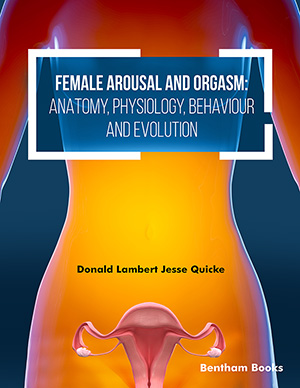
Abstract
Background: Although pregnancy has been an integral part of women’s lives for millennia, not all women have found the process comfortable. About 65 percent of women in India consume Indian traditional herbs during pregnancy. Herbal medicines are used nowadays by up to half of the world's population. Phytomedicines isolated from plants contain a wide variety of bioactive components that can have both negative and positive effects. Many herbal plants, such as Sage (Salvia fruticosa), golden cotula (Matricaria aurea), anise (P. anisum), peppermint (Mentha aquatica), and cumin (Cuminum cyminum), etc., are used in pregnancy. To minimize the adverse effects, the use of Indian traditional medicine can be the best possible alternative.
Objective: Regarding the usage of herbal medicines in India, there are large research gaps and a lack of a regulatory framework. This article aims to highlight the most common traditional Indian remedies used by pregnant women, along with their uses and any possible interactions between herbal remedies and prescription drugs.
Method: Several databases, including the WHO guidelines, PubMed, Bentham Science, Elsevier, Springer Nature, Wiley, and Research Gate, were used to compile the data for the article following a thorough analysis of the various research findings connected to pregnancy and herbs for pregnancy care.
Result: An overview of the use of herbal medicine is given in this review, along with information on its limitations and general safety. The prevalence of herbal medicine use during pregnancy in India is then discussed, along with the uses, adverse effects, side effects, and efficacy of the most popular herbal medications.
Conclusion: The use of herbal medicine during pregnancy is a common phenomenon. The outcomes of this study showed Indian Traditional medicines are known to have numerous advantages that can be helpful during or after pregnancy, including raising milk production, reducing nausea, easing labor pains, reducing morning sickness, or reducing flatulence, however, some herbal remedies have the potential to be teratogenic, poisonous, and abortive, especially during the first trimester of pregnancy because the active components of some medicinal plants can cross the placental barrier and get to the foetus. To determine the safety of taking herbal medications, studies, especially clinical trial trials, must be conducted.
Keywords: Herbal medicine, pregnancy, traditional medicine, ginger, medicinal herbs, labor.
[http://dx.doi.org/10.1007/s40264-020-00937-0] [PMID: 32328906]
[http://dx.doi.org/10.1001/archinte.158.20.2192] [PMID: 9818799]
[http://dx.doi.org/10.1016/S1353-6117(03)00045-3] [PMID: 14556766]
[http://dx.doi.org/10.1016/j.whi.2015.03.001] [PMID: 25935822]
[http://dx.doi.org/10.1139/Y07-080] [PMID: 18066129]
[http://dx.doi.org/10.1177/0021934708320001]
[http://dx.doi.org/10.4102/curationis.v38i2.1553] [PMID: 26842096]
[http://dx.doi.org/10.1016/j.reprotox.2016.03.038]
[http://dx.doi.org/10.1080/09735070.2015.11905422]
[http://dx.doi.org/10.1016/S0277-9536(96)00104-9] [PMID: 9089914]
[http://dx.doi.org/10.1186/1472-6882-13-355] [PMID: 24330413]
[http://dx.doi.org/10.1097/01.aoa.0000389618.03414.70]
[http://dx.doi.org/10.1097/AOG.0000000000000596] [PMID: 25560126]
[http://dx.doi.org/10.1007/BF02850250] [PMID: 11512532]
[http://dx.doi.org/10.1002/pds.945] [PMID: 15170766]
[http://dx.doi.org/10.1186/s13690-016-0118-z] [PMID: 26881052]
[http://dx.doi.org/10.1016/j.ejogrb.2014.08.017] [PMID: 25190299]
[http://dx.doi.org/10.3109/14767058.2013.766690] [PMID: 23363373]
[http://dx.doi.org/10.3164/jcbn.2007001] [PMID: 18392106]
[http://dx.doi.org/10.1016/S0140-6736(03)12227-1] [PMID: 12531576]
[http://dx.doi.org/10.2165/11317010-000000000-00000] [PMID: 19719333]
[http://dx.doi.org/10.1055/s-0036-1579537] [PMID: 26989565]
[http://dx.doi.org/10.5694/mja15.00636] [PMID: 26654614]
[http://dx.doi.org/10.4103/0257-7941.112136]
[http://dx.doi.org/10.52482/ayurlog.v7i05.434]
[http://dx.doi.org/10.1186/s12906-020-03032-0]
[http://dx.doi.org/10.1002/bdrb.10050] [PMID: 14745985]
[http://dx.doi.org/10.3389/fphar.2019.01483] [PMID: 31998122]
[http://dx.doi.org/10.5001/omj.2015.48] [PMID: 26366255]
[PMID: 25050296]
[http://dx.doi.org/10.1016/S0300-7073(07)71420-2]
[http://dx.doi.org/10.4103/0974-8520.153746] [PMID: 26664238]
[http://dx.doi.org/10.1111/j.1365-2044.1991.tb09754.x] [PMID: 1888002]
[http://dx.doi.org/10.54085/ap.2022.11.1.23]
[http://dx.doi.org/10.3390/nu12103179] [PMID: 33080891]
[http://dx.doi.org/10.51791/njap.v48i6.3325]
[http://dx.doi.org/10.1177/2156587215609851] [PMID: 26438718]
[http://dx.doi.org/10.3389/fendo.2019.00346] [PMID: 31231310]
[http://dx.doi.org/10.1016/S1526-9523(01)00095-2] [PMID: 11370690]
[http://dx.doi.org/10.1900/RDS.2016.13.113] [PMID: 28012278]
[http://dx.doi.org/10.1155/2022/4024331] [PMID: 35251206]
[http://dx.doi.org/10.1186/1472-6882-13-345] [PMID: 24314317]
[http://dx.doi.org/10.1007/s00228-016-2021-5] [PMID: 26895223]
[http://dx.doi.org/10.1080/10408398.2010.526725] [PMID: 23072529]
[http://dx.doi.org/10.31254/phyto.2015.4311]
[http://dx.doi.org/10.1016/S0091-2182(99)00055-5] [PMID: 10380450]
[http://dx.doi.org/10.1016/j.wombi.2020.12.011] [PMID: 33892910]
[http://dx.doi.org/10.1016/S0022-3476(98)70041-1] [PMID: 9544922]
[PMID: 27923318]
[http://dx.doi.org/10.1016/j.jep.2023.116459] [PMID: 37023837]
[http://dx.doi.org/10.1016/j.ctim.2022.102895] [PMID: 36273734]
[http://dx.doi.org/10.1016/j.eujim.2015.10.008]
[http://dx.doi.org/10.3920/978-90-8686-764-6_36]
[http://dx.doi.org/10.1056/NEJM200407153510323] [PMID: 15254294]
[http://dx.doi.org/10.1186/s12906-017-2052-1] [PMID: 29258478]
[http://dx.doi.org/10.1186/s12906-018-2203-z] [PMID: 29801482]
[http://dx.doi.org/10.2165/00003495-200161150-00002] [PMID: 11772128]
[http://dx.doi.org/10.1080/15228940802142852] [PMID: 18928139]
[http://dx.doi.org/10.1016/j.ejogrb.2013.02.014] [PMID: 23510951]
[http://dx.doi.org/10.1016/j.biopha.2018.01.033] [PMID: 29334663]
[http://dx.doi.org/10.3390/ijms11082839] [PMID: 21152277]
[http://dx.doi.org/10.18203/2319-2003.ijbcp20173290]
[http://dx.doi.org/10.1155/2019/3807207] [PMID: 30949217]
[http://dx.doi.org/10.1155/2019/7272808] [PMID: 31781278]
[http://dx.doi.org/10.1525/ae.1981.8.3.02a00040]
[http://dx.doi.org/10.1186/s12884-021-04117-5] [PMID: 34551744]
[http://dx.doi.org/10.1097/00000539-200203000-00039] [PMID: 11867399]
[http://dx.doi.org/10.1067/mob.2001.116688] [PMID: 11518905]
[http://dx.doi.org/10.1097/00006250-200104001-00108]
[http://dx.doi.org/10.1055/s-2005-873235] [PMID: 16118721]
[http://dx.doi.org/10.1111/j.0004-8666.2002.00494.x] [PMID: 12495093]
[http://dx.doi.org/10.1016/S1353-6117(03)00057-X] [PMID: 14744504]
[http://dx.doi.org/10.1016/j.midw.2010.08.007] [PMID: 21247674]
[http://dx.doi.org/10.1016/j.imr.2015.04.346]
[http://dx.doi.org/10.4314/gmj.v49i4.2]
[http://dx.doi.org/10.1080/09735070.2016.11905521]
[http://dx.doi.org/10.5812/jjnpp.13785]
[http://dx.doi.org/10.1186/s12884-016-1095-5] [PMID: 27716105]
[http://dx.doi.org/10.4314/thrb.v19i2.5]
[http://dx.doi.org/10.1111/j.0001-6349.2005.00659.x] [PMID: 15954882]
[http://dx.doi.org/10.25159/2520-5293/63]
[http://dx.doi.org/10.11604/pamj.2016.25.9.7876] [PMID: 28203312]
 11
11 1
1











